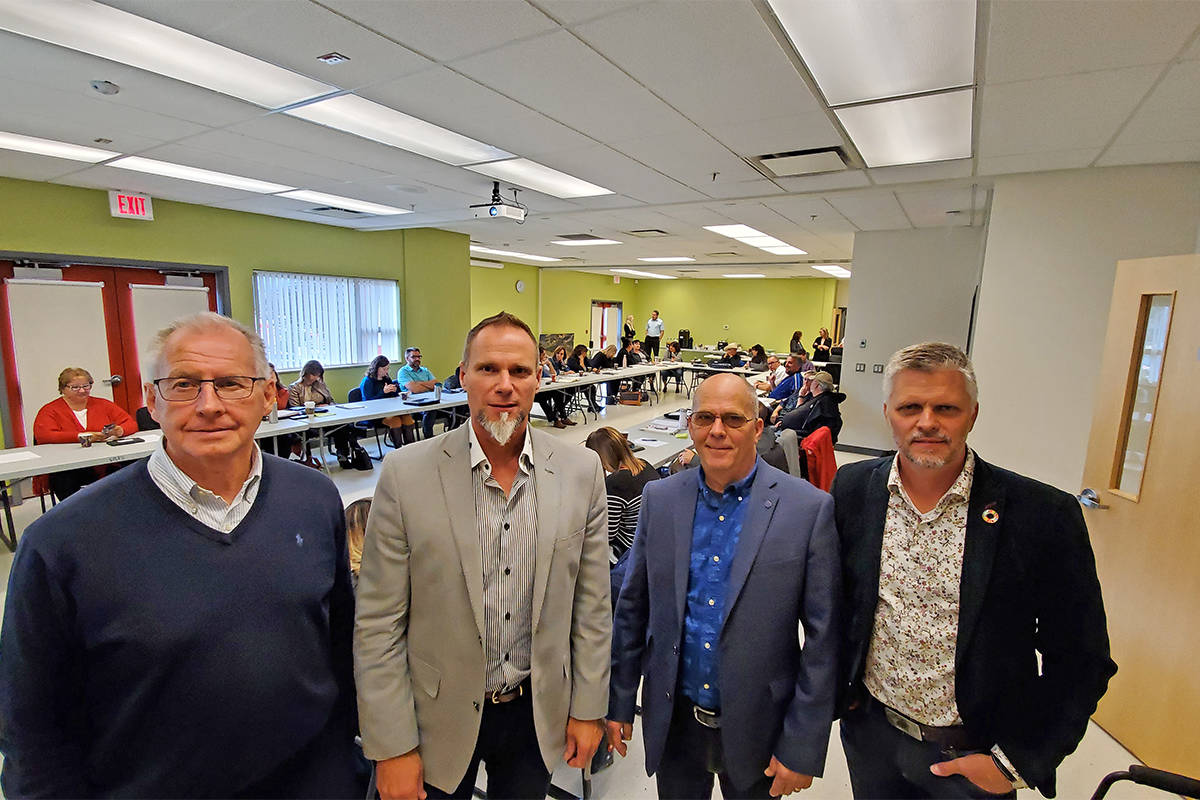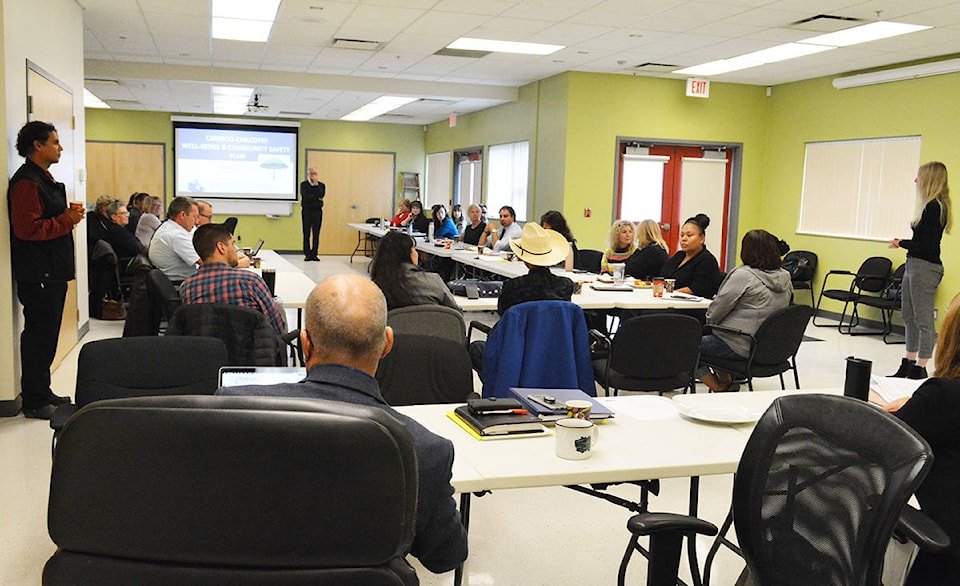People who will be part of the newly-formed situation table in Williams Lake will be expected to protect the privacy of anyone they help.
“We’ve worked with the privacy commissioners across the country and different agencies and all of them said we need training and rigorous discipline,” said Norm Taylor, a facilitator with The Global Network from Community Safety, who was in Williams Lake Tuesday, Sept. 17 along with colleague Brent Kalinowski, to introduce Williams Lake to the expectations of a situation table.
“What you don’t want is people to get casual and careless about the way they collaborate in people’s lives.”
In early October they will return to do two days of intensive training, which Taylor said, will establish that framework and ensure the people at the situation table can trust their partners around the table that they are all in it for the same purpose.
Kalinowski and Taylor have worked across Canada and in the U.S. with communities.
Kalinowski has a background in policing and said in about 2010 things came to a head.
“I felt we were just spinning our wheels and weren’t fixing anything,” he said, adding a lot of the work he was sent to do wasn’t police work. “I was working with the street crime unit in Prince Albert, Sask. There were issues of vagrancy, homelessness, prostitution and drugs in the downtown area and I was being told to go clean it up.”
Taylor has been an advisor to policing for 25 years and was doing some work on a policing strategy with the province of Saskatchewan and submitted a report stating the province had a marginalized people problem, not a policing problem.
Read more: Caring for Williams Lake’s most vulnerable a must: Dave Dickson
“That’s when we teamed up with the City of Prince Albert,” Taylor recalled, adding he and Kalinowski went to Glasgow, Scotland and met with Karyn McCluskey, a police intelligence analyst whose regime resulted in a 50 per cent reduction in violent gang crime, and her ally Dept. Supt. John Carnochan, her co-director at the Violence Reduction Unit. “It was while we were there we began to see ideas we thought we could transfer into Canada.”
In February 2011 they launched a new hub model that involves intervening before bad things happen, Kalinowski said.
“If we have an idea of the risks that are involved, why can’t we go out as a collaborative and offer supports, because we can see if we don’t, somebody is going to be dealing with this individual or this family down the road in a negative way.”
The agencies will have a discussion at the situation table about an anonymous adult male or an adult female, their situation, and the group determines if it is an acute risk or not.
“When it is, we will disclose limited information to understand who needs to be involved,” Kalinowski said. “Those specific agencies will speak after the meeting and share information that’s needed to mitigate the risk. They will go out later to find that person and offer services and supports.”
Nationally they are finding that between 75 to 80 per cent of the people they help only have to tell their story once.
“It’s shifting from an incident-driven environment to a risk-driven model. If we can see how risks are compounding in someone’s life we can get there before bad things happen and connect them to the services to get them on track,” Taylor said. “We find that fewer than 20 per cent of the people come back to the table. Things work better because all the agencies understand the problems and are working together.”
Since 2011, more than 100 Canadian communities have adopted the model and close to 20,000 people helped.
Each community determines a list of six to nine risks and they differ from place to place.
“In B.C. we already know from Penticton, Surrey and places like Burnaby and Kelowna that their community has its own pattern of contributing risk factors. If we know that ‘X’ per cent of our situations are a combination of mental health, substance use, unstable housing and violence in the home, now you can start at a more comprehensive response.”
Williams Lake RCMP Insp. Jeff Pelley attended Tuesday’s meeting and said he looks forward to future training.
“From a policing perspective the multi-layered approach and engagement of agencies surrounding the root issues of vulnerable individuals will certainly benefit community initiatives. The implementation of an integrated response based on known risks connecting the individual or family to social and health services will improve their well being and further enhance community safety.”
The City’s CAO Milo MacDonald, former RCMP inspector, said he was impressed by the holistic approach.
“The response from our community was great — it is something Dave Dickson and victim services has been trying to get off the ground,” MacDonald said.
Minister of Public Safety and Solicitor General Mike Farnworth sent an e-mailed statement about the ‘mobilization’ of the situation table and said it presented an opportunity to broaden stakeholder engagement and awareness.
“Other tables operating in the province are mostly based in the Lower Mainland, with two others located in Kelowna and one hub serving West Kelowna/Westbank First Nation/Peachland. Williams Lake will be the first Situation Table to be operating in the North District,” Farnworth said.
Felix Munger, managing director of Canadian Municipal Network on Crime Prevention, has been working locally with Dickson and residents from all demographics toward the creation of a community safety and well-being plan.
Read more: Cariboo Chilcotin well-being and community safety survey launched
“We are trying to bring everything under one umbrella,” Munger said. “We are trying to overcome the silo-approach to challenges. The challenges of homelessness, the challenges of mental health and the challenges of addiction. They are all intertwined, but there are oftentimes, people are working in isolation.”
Munger said he has worked across the country and could see how much energy there was in the room Tuesday in Williams Lake.
“Williams Lake is ahead of its time in creating a community safety and well-being plan. They are the first community in B.C. In Ontario it has just been legislated that every community has to have one,” Munger said.
news@wltribune.com
Like us on Facebook and follow us on Twitter

